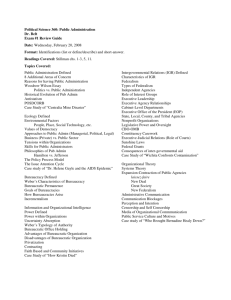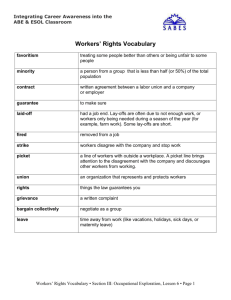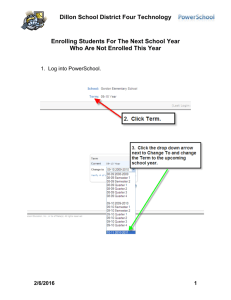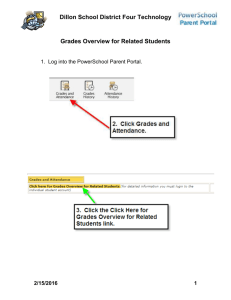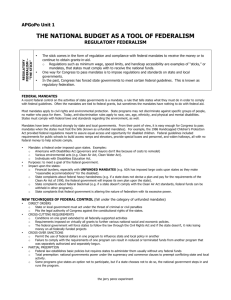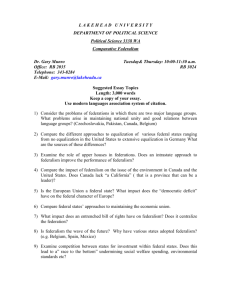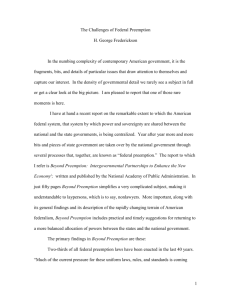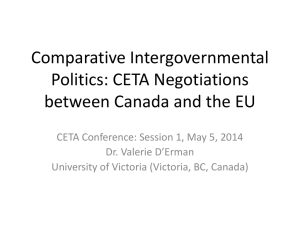Intergovernmental Relations
advertisement
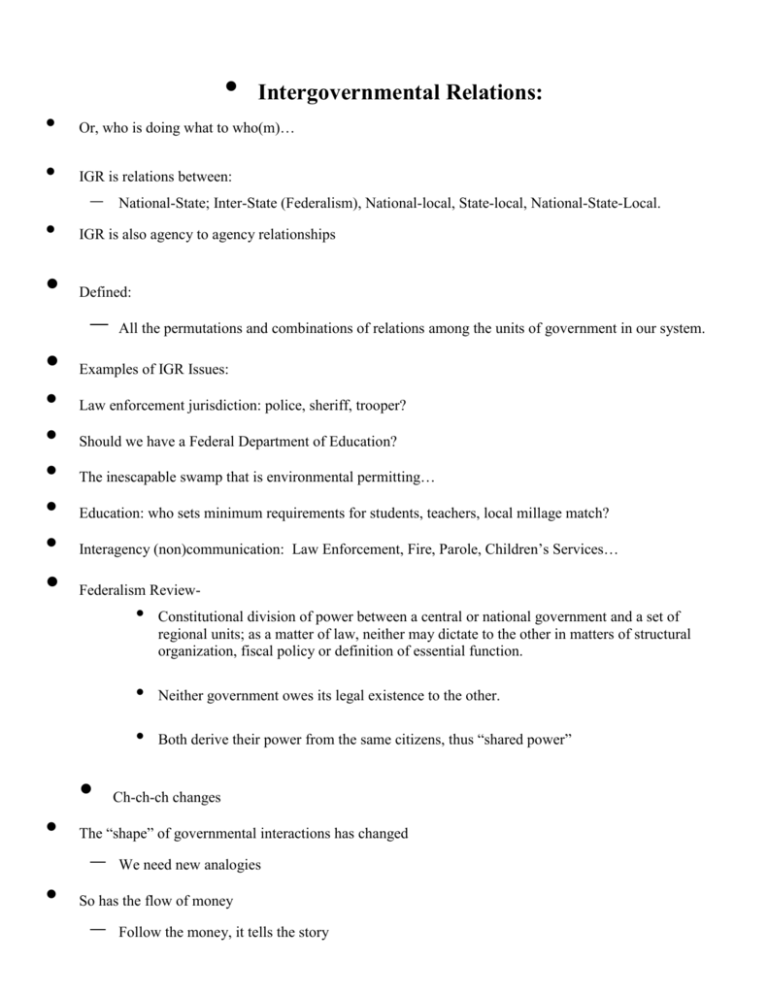
• Intergovernmental Relations: • Or, who is doing what to who(m)… • IGR is relations between: – National-State; Inter-State (Federalism), National-local, State-local, National-State-Local. • IGR is also agency to agency relationships • Defined: • • • • • • • • • – All the permutations and combinations of relations among the units of government in our system. Examples of IGR Issues: Law enforcement jurisdiction: police, sheriff, trooper? Should we have a Federal Department of Education? The inescapable swamp that is environmental permitting… Education: who sets minimum requirements for students, teachers, local millage match? Interagency (non)communication: Law Enforcement, Fire, Parole, Children’s Services… Federalism Review- • • Constitutional division of power between a central or national government and a set of regional units; as a matter of law, neither may dictate to the other in matters of structural organization, fiscal policy or definition of essential function. • Neither government owes its legal existence to the other. • Both derive their power from the same citizens, thus “shared power” Ch-ch-ch changes The “shape” of governmental interactions has changed – We need new analogies So has the flow of money – Follow the money, it tells the story • • • • • • • So has the legal authority given (or withheld) by states to their local governments – This is Dillon’s Rule vs. Home Rule So has the concept of telling other governments what to do – This is the “mandates” question What Happened after the Cakes: Three Analogies Picket fences Bamboo thickets Iron triangles Picket Fence Federalism • • • • • • “connecting cross slat” - does little to support, but holds things together. This is the classic IGR model of federalism Bam! boo! – – • Vertical functional autocracies – The picket fence has mutated to a bamboo fence… ACIR said: “largely self-governing professional guilds composed of bureaucrats a all levels with common programmatic concerns” This is the more modern IGR model The Iron Triangle (not to be confused with the Bermuda triangle…) A sub-system or political alliance between the related – – – Legislative Committee Administrative Agency Interest Group This was originally described at the national level, but can be seen at the state level too • • The Iron Triangle Meets the Picket Fence Money, Money,Money, Money, MONEY! • Block Grant, Categorical, Revenue Sharing • Purse Strings and Apron Strings • Pork: It’s all local… • Private Sector Grants • – Competition between governments for grants Dillon’s Rule - John Dillon - 1868 • • • • As Bill Cosby said: “I brought you into this world and I can take you out of it!” • Do what I say; No more, No less. Home Rule 2/3 cities with 2500+ have adopted home rule charters. • • • Municipal corporations can exercise only those powers expressly granted by state constitution or law and those necessarily implied by granted power. • Free to enact their own laws as long as not in conflict with state laws. Not as big of a change as it sounds - most things are defined as “state” concerns and courts are still very state-oriented (from Dillon’s Rule) Arkansas counties have home rule as of 1973 Mandates – Imposed by legislatures as a means of ensuring that lower governmental units will undertake a particular activity to realize a social or economic goal, attain a specified level of performance or achieve statewide uniformity. • • • • • • • • • – Un-funded Mandate – A requirement to act, but no money or revenue source for implementation. ACIR - Advisory Commission on Intergovernmental Relations Did surveys, provided lots of information. Little “ACIRs” in states. Made a big stink about un-funded mandates, so… No longer with us as a governmental entity – (Thanks, Newt) Now a not-for-profit funded by locals States as Laboratories of Democracy. Justice Louis Brandeis - 30s and 40s - Appointed by FDR – • Some interpret judicial decisions as mandates also “It is one of the happy incidents of the federal system that a single courageous state may, if its citizens choose, serve as a laboratory and try novel social and economic experiments without risk to the rest of the country.” – p.183 of Stenberg Article - “States in spotlight.” Intergovernmental Relations – – Application How Kristen Died • Page 64 • Think about this…. • • • • • • Unit 4 Readings: Text: – – Stillman - Inside Public Bureaucracy p. 180 Wilson - Bureaucracy and the Public Interest p. 469 Handouts: – – – Josephson - Six Pillars of Character The ASPA Code of Ethics The Difference Between Neutral and Mindless (Caiden) Cases: – – – Case – “They Had a Plan” page 422 Stillman How Kristin Died p. 64 Bluestone - handout PowerPoint Outlines are on the Web Web Item of Interest Due Dec. 11th!
